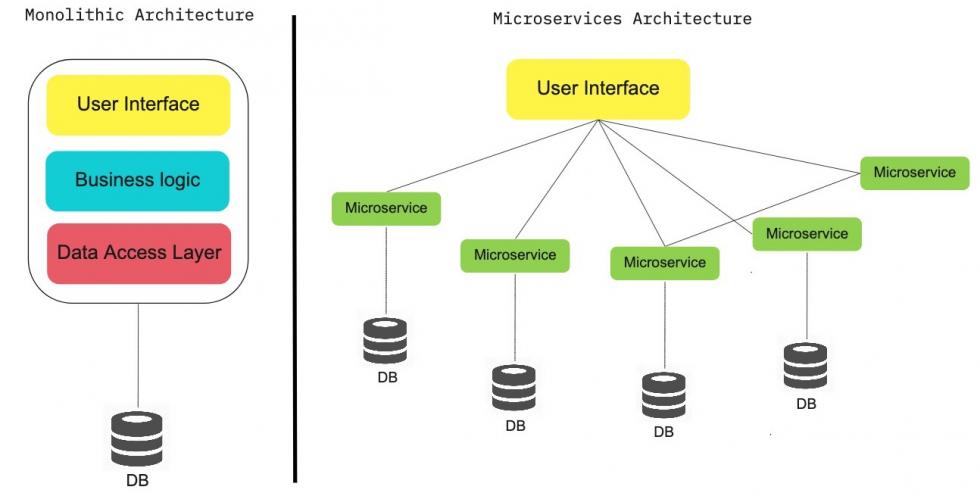
Why Apply Modular Architecture in Mobile App Design
Modular architecture in mobile app design and development involves breaking down applications into smaller, manageable units, including modules, components, and subsystems. This approach enables the replacement or addition of modules without disrupting the entire system. It allows for adaptability to evolving business needs and customer expectations over time.
Why Modular Architecture is the Secret Weapon for Your Mobile App
Mobile apps are the frontline for customer engagement in today’s dynamic business landscape. But as your app grows and user expectations evolve, a monolithic architecture can quickly turn into a tangled mess. This is where modular architecture emerges as a game-changer.
Imagine your app as a city. A monolithic approach is like having everything crammed into a single, sprawling district. Changes and updates become nightmarish traffic jams, slowing everything down. Modular architecture, on the other hand, is like a well-planned metropolis with distinct, interconnected districts. Each district (module) has its dedicated purpose, allowing for independent growth and updates without disrupting the entire city (app).
Advantages of Modular Architectures
Here's why businesses should consider modular architecture for their next mobile app:
- Future-proof your app: Business needs and customer demands are constantly in flux. A modular architecture allows you to easily adapt by adding, removing, or updating specific modules without rewriting the entire app. This agility keeps your app competitive and relevant.
Loose coupling ensures changes in one module have minimal impact on others, promoting flexibility. Think of it as independent city districts undergoing construction without affecting the entire metropolis.
- Scaling Without Breaking a Sweat: Remember the growing pains of popular apps like Robinhood and Uber? Modular architecture eliminates scalability bottlenecks. As your user base explodes, you can seamlessly add resources to specific modules, ensuring a smooth user experience.
Horizontal scaling allows you to easily add more instances of a specific module (such as a user management module) to handle an increased load, like adding more lanes to a congested highway.
- Ease developer productivity: Modular architecture breaks down complex tasks into manageable chunks. This empowers your developers to work independently, boosting their efficiency and reducing time wasted on code conflicts.
- Lower costs, higher gains: Modular apps are easier to maintain and update, saving you money on technical debt. Imagine a traditional monolithic codebase as a house of cards - a small change can bring the whole thing down. Modular code is like a well-built house, with isolated sections for easier maintenance. Moreover, a well-structured modular codebase attracts top engineering talent, further propelling your app's success.
The Microservices Revolution: Unparalleled Agility
Modular architecture (Service-Oriented Architecture (SOA) is the foundation for microservices, a cutting-edge approach gaining traction across industries. You gain unparalleled flexibility and agility by breaking your app into independent, service-oriented modules. Microservices started gaining traction after Netflix adopted them in 2009 when they mastered the new distributed systems. Click here to discover other companies' paths toward building microservices architectures.
“If you go back to 2001, the Amazon.com retail website was a large architectural monolith” - Rob Brigham, Head of Product, AWS Developer Tools @AWS

Is a Modular Architecture Rebuild Right for You?
If your current app struggles to keep pace with your business or is frustrating your users, a modular rebuild can be transformative. Even at the planning stage, a modular approach ensures your app is built for future success.
SEIDOR Opentrends: Your Partner in Building Winning Mobile Apps
Our Agile Transformative TeamsTM are built-up teams of experts in crafting future-proof mobile app architectures. We leverage rapid prototyping and real user validation to ensure your app delivers the experiences your customers crave.
FAQs about modular architecture in mobile app design
What is modular architecture in mobile app development?
Modular architecture is a software design pattern that breaks down a complex application into smaller, independent modules. Each module is responsible for a specific function or feature, and the modules are connected using well-defined interfaces. This makes modular architecture ideal for developing large, complex mobile apps, as it allows developers to work on different modules independently and ensures that the app is easy to maintain and update.
How does modular architecture differ from traditional architecture in mobile app design?
Traditional architecture follows a monolithic approach, where the entire app is built as a single unit. This lack of modularity makes it challenging to make changes or work on different features independently. On the other hand, modular architecture breaks down the app into smaller functional modules, providing functional independence. This allows for easier updates, modifications, and combinations of modules without requiring substantial changes to the entire codebase.
How does modular architecture contribute to long-term app success and maintenance?
Modular architecture enhances long-term app success and maintenance through improved maintainability, scalability, future-proofing, and developer productivity. It allows easier updates and bug fixes in specific modules, accommodates resource scaling, adapts to changing requirements and operating systems, and enables independent module development for increased productivity.




